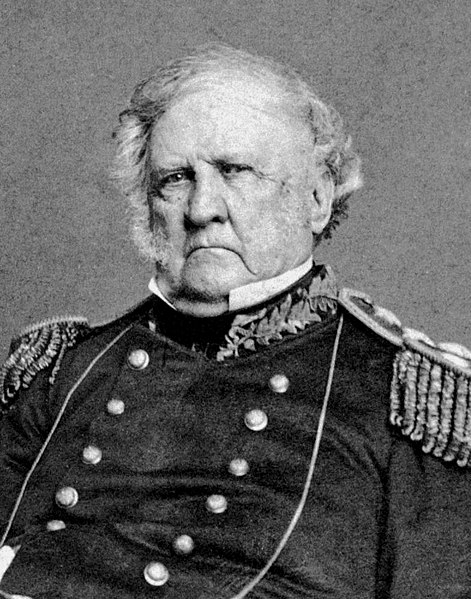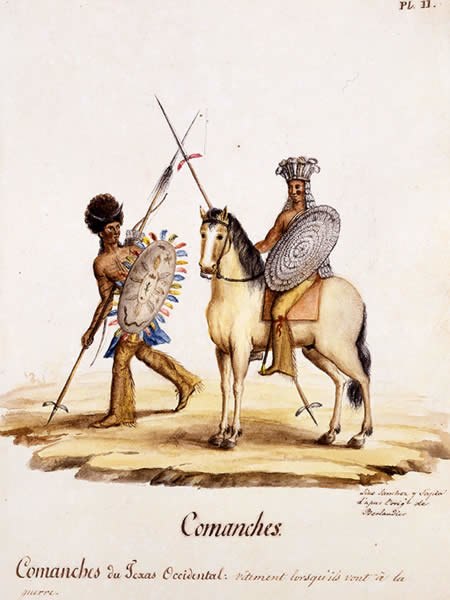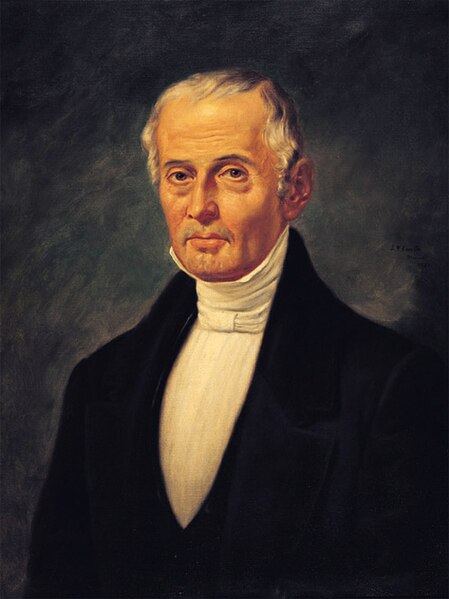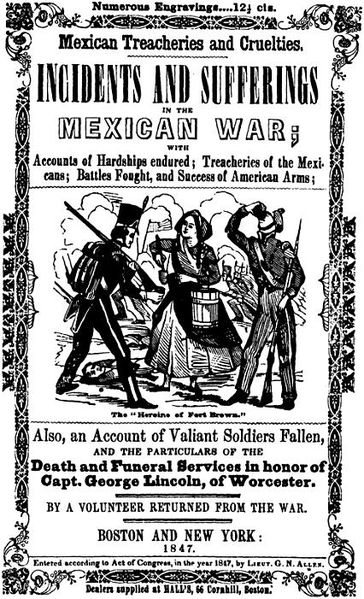Winfield Scott was an American military commander and political candidate. He served as Commanding General of the United States Army from 1841 to 1861, having taken part in the War of 1812, the Mexican–American War, the early stages of the American Civil War serving the union, and also in the American Indians wars earlier in his career. Scott was the Whig Party's presidential nominee in the 1852 election, but was defeated by Democrat Franklin Pierce. He was known as Old Fuss and Feathers for his insistence on proper military etiquette, as well as the Grand Old Man of the Army for his many years of service.
Scott in uniform, c. 1862
Bust of Scott by William Rush, c. 1814
Maria DeHart Mayo (1789–1862), portrait by Asher Durand
Winfield Scott age of 49, 1835 portrait by George Catlin
The Mexican–American War, also known in the United States as the Mexican War, and in Mexico as the United States intervention in Mexico, was an invasion of Mexico by the United States Army from 1846 to 1848. It followed the 1845 American annexation of Texas, which Mexico still considered its territory because Mexico refused to recognize the Treaties of Velasco, signed by President Antonio López de Santa Anna after he was captured by the Texian Army during the 1836 Texas Revolution. The Republic of Texas was de facto an independent country, but most of its Anglo-American citizens who had moved from the United States to Texas after 1822 wanted to be annexed by the United States.
Comanches of West Texas in war regalia, c. 1830.
Liberal Valentín Gómez Farías, who served as Santa Anna's vice president and implemented a liberal reform in 1833, was an important political player in the era of the Mexican–American War.
U.S. Army full dress and campaign uniforms, 1835–1851.
Sarah A. Bowman "The Great Western", depicted as the Heroine of Fort Brown. At her death, she was buried with full military honors.








